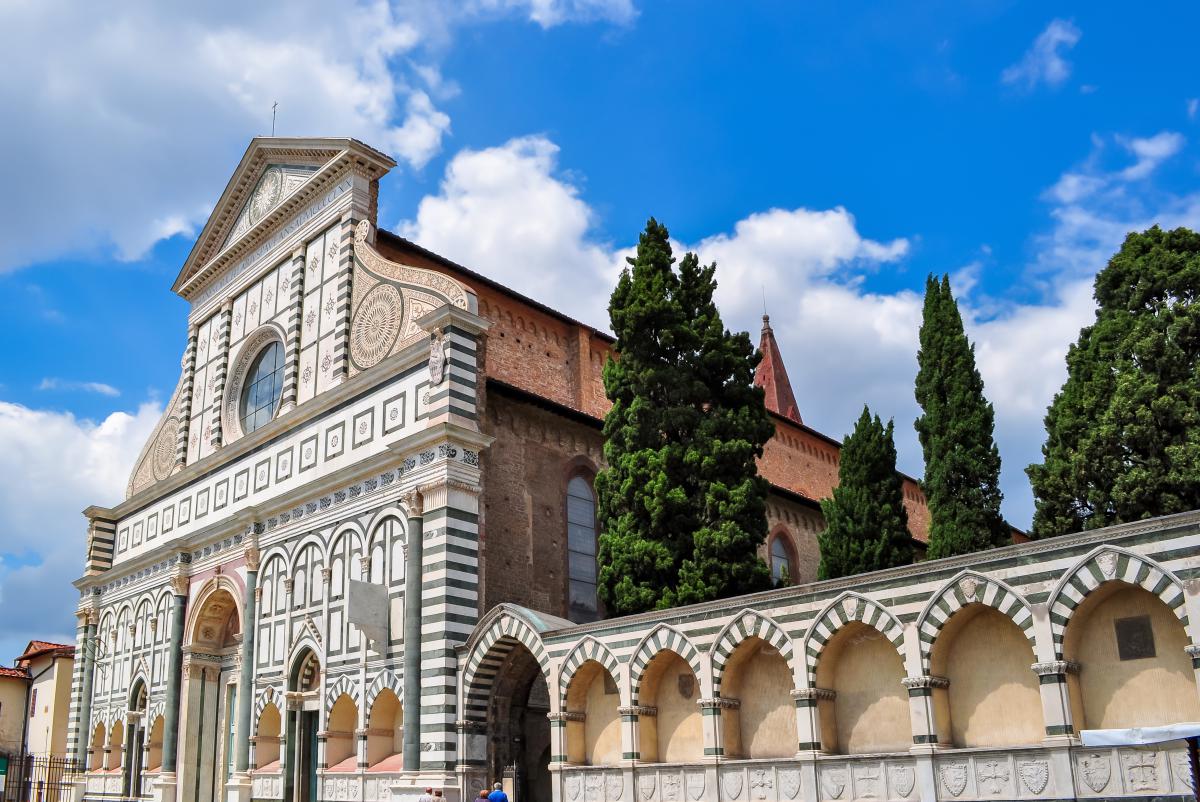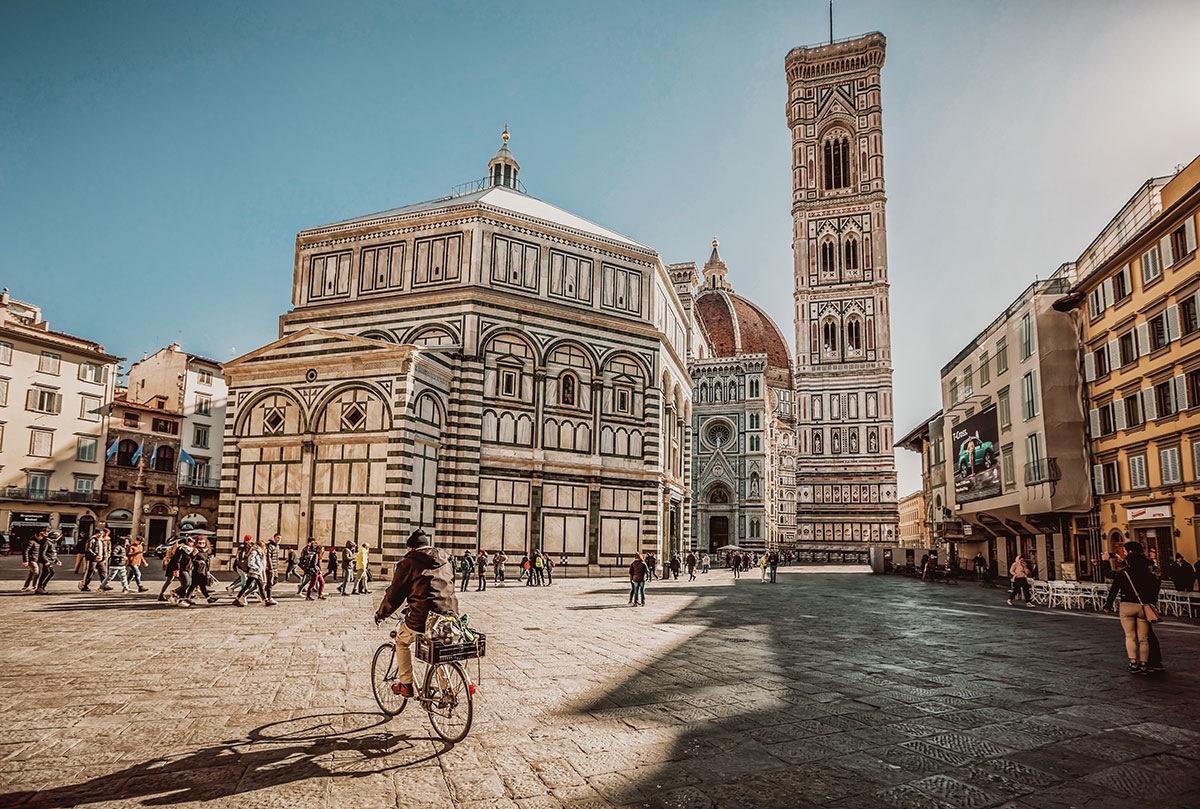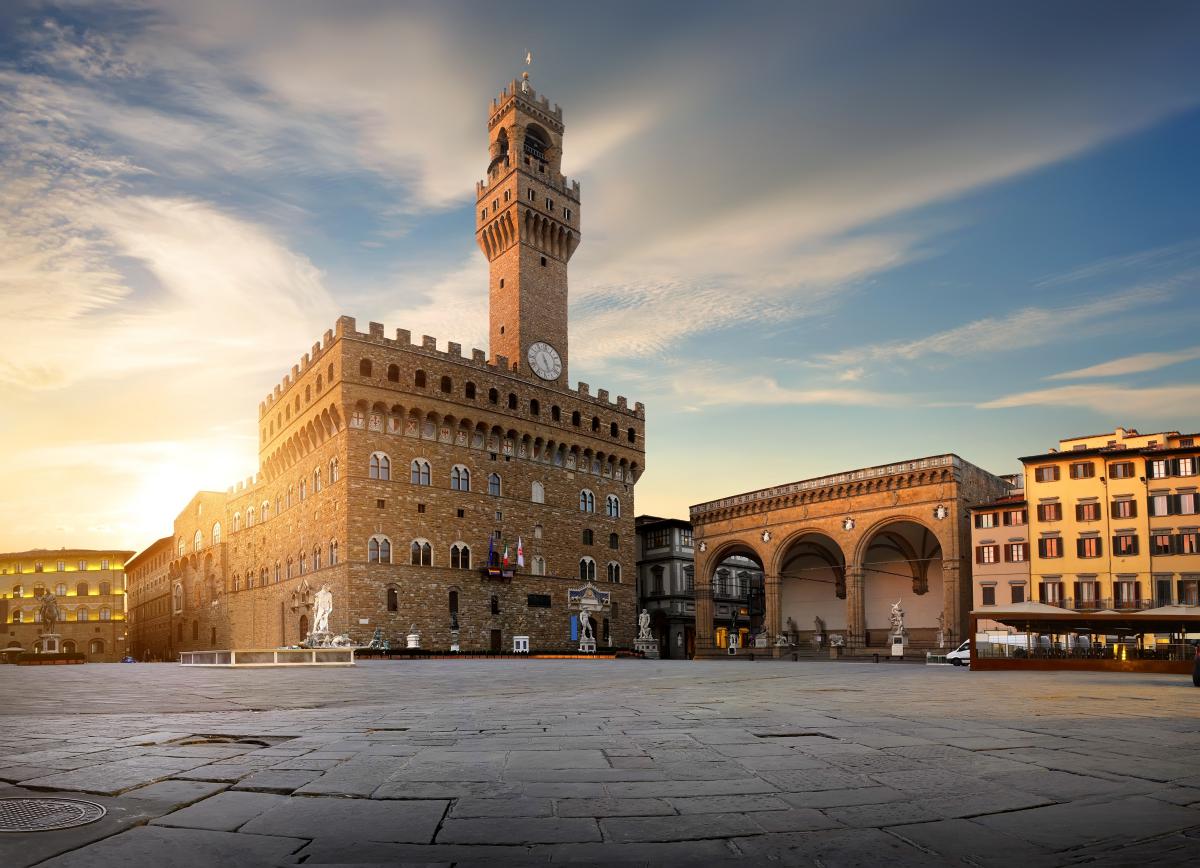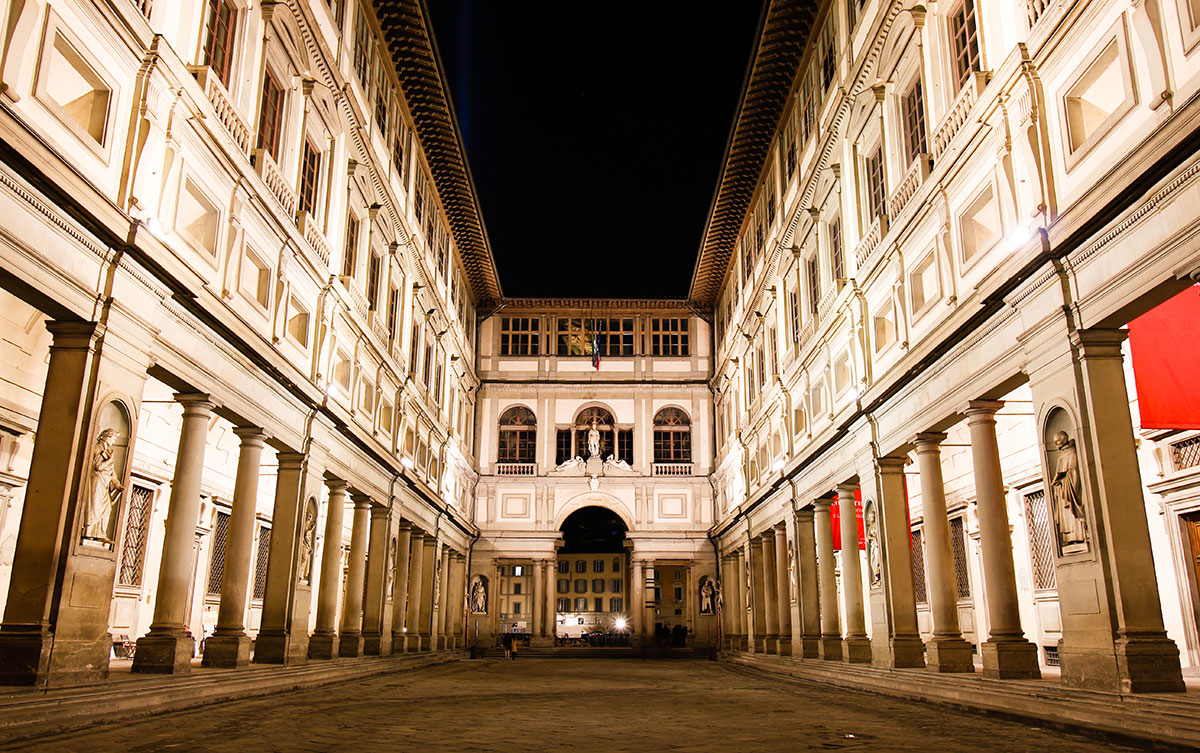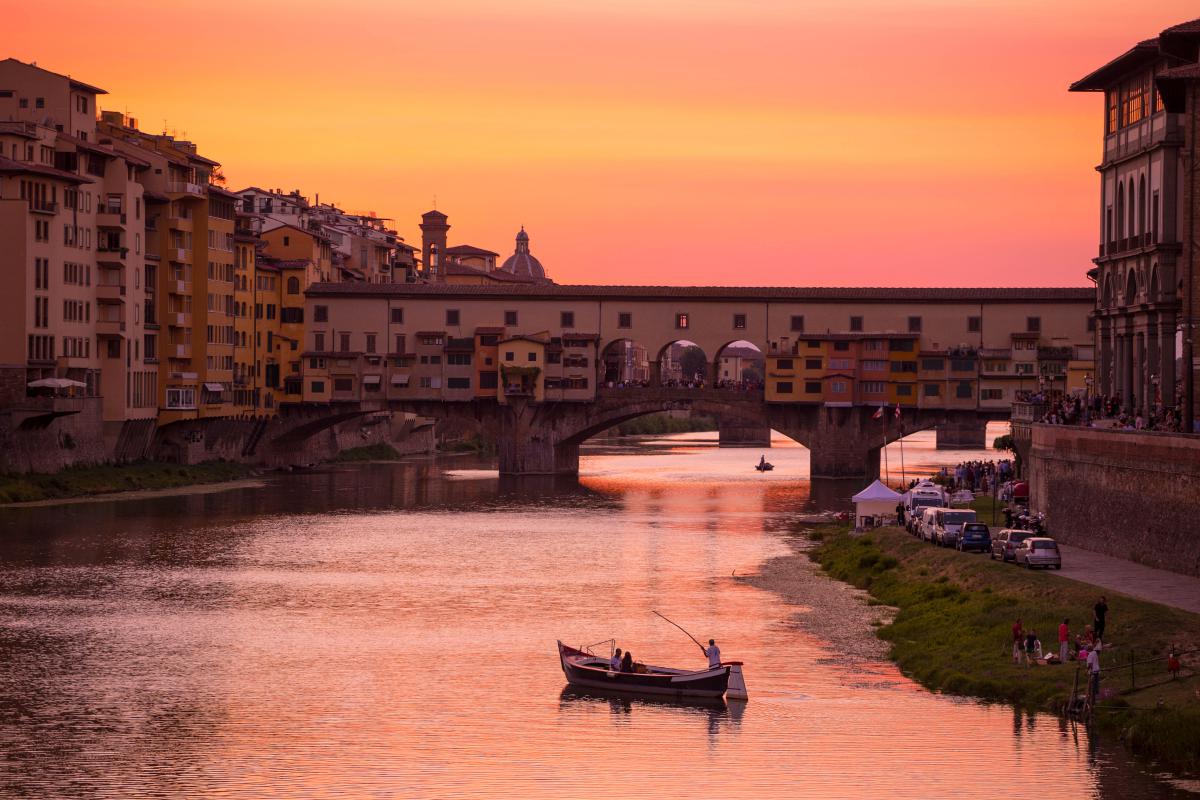Visiting Florence in one day
The Villa dei Bosconi itineraries: “Visit Florence in one day”
Florence is a world-famous jewel of Tuscany. Cradle of Art with a capital A, the city of the Medici family exudes history in every alley. There are so many artistic treasures in the Florentine capital that to attempt an itinerary that can cover them all in one day is an impossible task.
Places to visit in the centre of Florence
We at Villa dei Bosconi therefore suggest an itinerary that covers, at least in part, the most famous monuments and the most iconic places in the Medicean city, so that you can admire as many of the most astonishing testimonies that the cradle of the Renaissance has to offer.
Recommended itinerary
• Santa Maria Novella
• Ponte Vecchio
• Piazza Duomo
• Piazza della Signoria
• Galleria degli Uffizi
• Mercato del Porcellino
Our ideal itinerary starts from the Basilica of Santa Maria Novella.
Designed by Leon Battista Alberti, it is covered in beautiful polychrome marble and contains Giotto’s Crucifix at the end of the main nave.
Among the many works inside are Masaccio’s Trinity, David Ghirlandaio’s Saint Lucia and Donor, Giorgio Vasari’s Resurrection and Four Saints and Filippo Brunelleschi’s Crucifix. The admirable beauty of the Tornabuoni, Strozzi and Rucellai chapels is also worth noting.
The itinerary then proceeds to Piazza Duomo, where the iconic Cathedral of Santa Maria del Fiore stands.
Also known as the Florentine Duomo, the immense structure was the largest church in the world when it was completed in 1436, and today is inferior only to St. Peter’s in Rome and the Duomo in Milan.
Begun under the guidance of Arnolfo di Cambio in 1296, its construction covers a century and a half of Florentine history, testified by the work of the artists who – over time – have followed one another to complete the various sections of the building. Interesting, in fact, are the testimonies left by Giotto and Giovanni di Lapo Ghini.
But, above all, the Cathedral is known the world over for the extraordinary masonry dome built by Brunelleschi, an authentic architectural jewel in which there is the largest surface ever decorated with frescoes by such immense artists as Vasari and Zuccari. This dome is probably the first evidence of the era later known as the Renaissance, which was born in Florence, and certainly the most renowned and symbolic work of architectural ingenuity of the time and which still astounds those who admire it.
Finally, in an unusual position, Giotto’s Campanile stands out, aligned with the façade, with its refined decorative technique using white, green and red marble, and the grandiose figurative cycle that adorns its base.
Piazza della Signoria, the decision-making centre of Florence
Piazza della Signoria, site of the Palazzo Vecchio, is easily reached from Piazza Duomo.
Historically famous for having housed first the Signoria, the main political authority of the Republic of Florence, and then Duke Cosimo I de’ Medici – when it was called Palazzo Ducale – it finally took the name Palazzo Vecchio in 1565 when the ducal court moved to Palazzo Pitti.
From 1865 to 1871 it was the seat of the Parliament of the Kingdom of Italy, while today it is the seat of the City Council.
Artistically, it is a milestone of the Renaissance, as in the beautiful rooms you can find works by Vasari, Ghirlandaio and works by Michelangelo, Donatello and Verrocchio.
A copy of Michelangelo’s David can be found at the foot of the Palazzo, while the original is kept in the Galleria dell’Accademia.
The Piazza della Signoria is embellished by the Loggia dei Lanzi, the equestrian statue of Cosimo I and the Fountain of Neptune.
The Uffizi, jewel of Florence
From Palazzo Vecchio we only have to walk a few hundred metres, enjoying the splendid setting of Ponte Vecchio and the breathtaking views offered by the Arno and the Lungarno that borders it, to reach the Uffizi Galleries, one of the most important museum complexes in the world.
This complex, consisting of the Uffizi Gallery, the Vasari Corridor and the collections of Palazzo Pitti, a building set in the magnificent Boboli Gardens, is rightly considered one of the most important museums in the world.
This name derives mainly from the impressiveness of the collections housed in the complex, ranging from the enormous collections of works by Raphael and Botticelli, which are shown to guests among the numerous works by some of the most important and well-known artists in the world, such as Caravaggio, Leonardo da Vinci, Giotto, Tiziano, Rubens, Dürer, all located in the Uffizi Gallery, to the artworks dating from the 16th to the 18th century housed in Palazzo Pitti.
The importance and variety of the priceless art collections make the Uffizi an unmissable stop on any itinerary through the city of Florence.
Returning, finally, to Ponte Vecchio, we can enjoy the view of the Lungarno, visiting the many small goldsmiths’ shops along it, until we reach the Porcellino market, where we can conclude the tour by buying one of the objects of the market’s typical leather goods, or taking a photo in front of the golden statue of the Porcellino.


